History
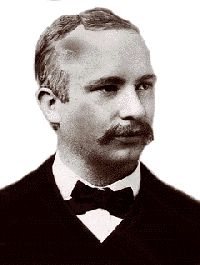 Federal holidays are celebrated for a number of reasons. Labor Day is a federal holiday in the United States celebrated on the first Monday in September. PJ McGuire, Vice President of the American Federation of Labor, is frequently credited as the father of Labor Day in the United States. The day was designed to honor and recognize the American labor movement, as well as the works and contributions of laborers to the development and achievements of the United States. Of course, many people simply look at these “three-day weekend” holidays as a great day to go out of town, sleep in on a normal workday, barbecue, or play golf or some other sport. That wasn’t exactly the plan with these, but many of them do have special events attached to them, such as parades or other celebrations.
Federal holidays are celebrated for a number of reasons. Labor Day is a federal holiday in the United States celebrated on the first Monday in September. PJ McGuire, Vice President of the American Federation of Labor, is frequently credited as the father of Labor Day in the United States. The day was designed to honor and recognize the American labor movement, as well as the works and contributions of laborers to the development and achievements of the United States. Of course, many people simply look at these “three-day weekend” holidays as a great day to go out of town, sleep in on a normal workday, barbecue, or play golf or some other sport. That wasn’t exactly the plan with these, but many of them do have special events attached to them, such as parades or other celebrations.
Labor Day began in the late 19th century, with the first Labor Day being Tuesday, September 5, 1887. As the trade union and labor movements grew, trade unionists proposed that a day be set aside to celebrate labor. “Labor Day” was promoted by the  Central Labor Union and the Knights of Labor, which organized the first parade in New York City. Still, it was not celebrated everywhere at that time. In 1887, Oregon was the first state of the United States to make it an official public holiday. Labor Day didn’t become an official federal holiday, until 1894, when thirty states in the US officially celebrated Labor Day. Of course, these holidays didn’t get changed to “Monday Holidays” until the enactment of the Uniform Monday Holiday Act on enacted June 28, 1968. At that time, that made Washington’s Birthday and Memorial Day, as well as Columbus Day permanently on a Monday.
Central Labor Union and the Knights of Labor, which organized the first parade in New York City. Still, it was not celebrated everywhere at that time. In 1887, Oregon was the first state of the United States to make it an official public holiday. Labor Day didn’t become an official federal holiday, until 1894, when thirty states in the US officially celebrated Labor Day. Of course, these holidays didn’t get changed to “Monday Holidays” until the enactment of the Uniform Monday Holiday Act on enacted June 28, 1968. At that time, that made Washington’s Birthday and Memorial Day, as well as Columbus Day permanently on a Monday.
Of all the holidays that are celebrated on Mondays, Labor Day is probably the one that really is somewhat designed for a “three-day weekend” kind of celebration. We were, after all celebrating workers and all they had 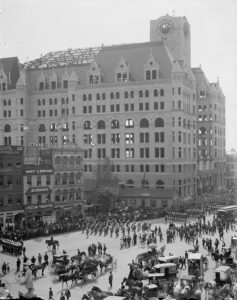 accomplished. When Labor Day was proposed, there was disagreement among labor unions about when a holiday celebrating workers should be. Some people advocated for continued emphasis of the September march-and-picnic date, while others wanted the designation of the more politically charged date of May 1. If you ask me, a May 1st picnic day has a much greater chance of getting rained out, than a September date, but that’s just my opinion. In the end, the September date won out, and now Labor Day is often viewed the “unofficial end of summer” because it marks the end of the cultural summer season. Many take their two-week vacations during the two weeks ending Labor Day weekend. Many fall activities, such as school and sports (particularly football), begin about this time. I’m not sure how many people really think about the labor side of the holiday at all. Nevertheless, they all enjoy the three-day weekend, and all the fun it includes.
accomplished. When Labor Day was proposed, there was disagreement among labor unions about when a holiday celebrating workers should be. Some people advocated for continued emphasis of the September march-and-picnic date, while others wanted the designation of the more politically charged date of May 1. If you ask me, a May 1st picnic day has a much greater chance of getting rained out, than a September date, but that’s just my opinion. In the end, the September date won out, and now Labor Day is often viewed the “unofficial end of summer” because it marks the end of the cultural summer season. Many take their two-week vacations during the two weeks ending Labor Day weekend. Many fall activities, such as school and sports (particularly football), begin about this time. I’m not sure how many people really think about the labor side of the holiday at all. Nevertheless, they all enjoy the three-day weekend, and all the fun it includes.
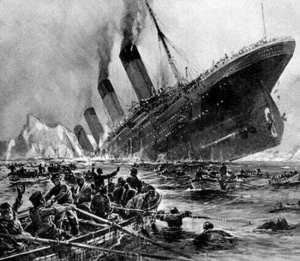
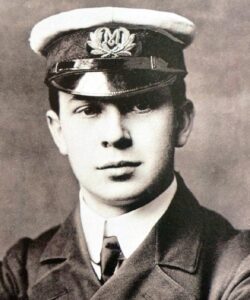 The radioman had done his best. He tried to warn the radioman on RMS Titanic about the dangers lurking in the dark, moonless night…icebergs. Mistakenly believing that Titanic was unsinkable, 25-year-old John George “Jack” Phillips, a British sailor and the senior wireless operator aboard the Titanic during her ill-fated maiden voyage in April 1912, was too busy to listen or heed the warnings. So, the radioman on SS Mesaba turned off his radio and went to bed, making the ship unaware of the disaster the Titanic was experiencing after she hit an iceberg and began to sink. Many rules of the sea changed after that, and from then on, the radio had to be monitored 24/7…in case a disaster happened again. Sadly, safety laws come after disasters.
The radioman had done his best. He tried to warn the radioman on RMS Titanic about the dangers lurking in the dark, moonless night…icebergs. Mistakenly believing that Titanic was unsinkable, 25-year-old John George “Jack” Phillips, a British sailor and the senior wireless operator aboard the Titanic during her ill-fated maiden voyage in April 1912, was too busy to listen or heed the warnings. So, the radioman on SS Mesaba turned off his radio and went to bed, making the ship unaware of the disaster the Titanic was experiencing after she hit an iceberg and began to sink. Many rules of the sea changed after that, and from then on, the radio had to be monitored 24/7…in case a disaster happened again. Sadly, safety laws come after disasters.
So, what happened to the ship that tried to save the Titanic? I had never given that any thought, but now, more than 110 years after the Titanic sank after striking an iceberg, I read that SS Mesaba, the ship that sent warnings to the famous vessel has also been discovered on the ocean floor. Of course, this was not a surprise to those who found the ship, because they knew what had happened to the ship. Those who knew…researchers at Bournemouth University and Bangor University in Wales, sent a team, using multibeam sonar to find the now famed “ship that tried” to save Titanic.
What I didn’t know, until now, was that just six years after the sinking of RMS Titanic, the SS Mesaba was sunk in the Irish Sea during World War I. Mesaba was making a convoy voyage from Liverpool to Philadelphia on September 1, 1918, when a German U-boat’s torpedo took out the merchant ship, killing twenty people. Titanic was finally found in 1985, but the “ship that tried” to save her, took more than 100 years to locate. Possibly it was because of all the new technology we have, including sonar, which “uses sound waves to measure the distance between a sound source and various objects in its surroundings. This kind of method can be used for navigation, communication, and mapping. It is also frequently used by underwater vessels.” The Bangor researchers used active sonar to map the seabed, and also identified the Mesaba wreckage by emitting pulses of sounds and listening for echoes. Innes McCartney, who is a researcher with Bangor, says the multibeam sonar is a “game-changer” for marine technology. Finally, SS Mesaba’s final resting place is known, although 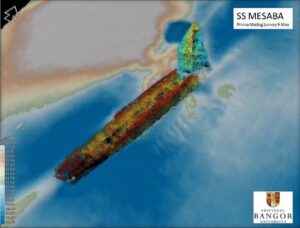
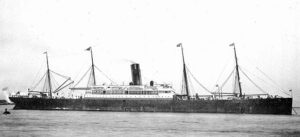 that doesn’t change anything for the ship. After all these years of wondering, the ship will stay right where it is, although it may be explored now and any valuables can be removed by the team, who was the first to locate, and is therefore eligible to salvage if they choose to.
that doesn’t change anything for the ship. After all these years of wondering, the ship will stay right where it is, although it may be explored now and any valuables can be removed by the team, who was the first to locate, and is therefore eligible to salvage if they choose to.
 As we all know, Adolph Hitler was a liar and a murderer. He really never made a move that wasn’t calculated and devious. On September 1, 1939, German forces under the control of Adolf Hitler bombarded Poland on land and from the air. The invasion was more than just a taking of territory. Hitler knew that he might need that area later, and so he did. Hitler had been murdering people that didn’t fit into his mold of “life that had value” and that included Jews, the mentally or physically handicapped, and later gypsies and other ethnicities. Basically, he wanted to eliminate anyone that wasn’t Aryan. Aryan is a word relating to a hypothetical ethnic type illustrated by or descended from early speakers of Indo-European languages. To Hitler it meant white, with blond hair and blue eyes. Oddly, while Hitler had blue eyes, his hair was brown. Somehow that “problem” with his definition of Aryan didn’t concern Hitler. I guess he was happy to be a “special Aryan.” In reality, there are different kinds of Aryans. They can be found with blond, red, brown, white, or black hair, so that wasn’t really an issue either. Hitler considered himself Aryan because he was a native German-speaker, and he knew the definition of “Aryan” as it was used in those days. I don’t think it was ever about Aryan, per se, but rather about getting rid of any group that he decided that he didn’t like.
As we all know, Adolph Hitler was a liar and a murderer. He really never made a move that wasn’t calculated and devious. On September 1, 1939, German forces under the control of Adolf Hitler bombarded Poland on land and from the air. The invasion was more than just a taking of territory. Hitler knew that he might need that area later, and so he did. Hitler had been murdering people that didn’t fit into his mold of “life that had value” and that included Jews, the mentally or physically handicapped, and later gypsies and other ethnicities. Basically, he wanted to eliminate anyone that wasn’t Aryan. Aryan is a word relating to a hypothetical ethnic type illustrated by or descended from early speakers of Indo-European languages. To Hitler it meant white, with blond hair and blue eyes. Oddly, while Hitler had blue eyes, his hair was brown. Somehow that “problem” with his definition of Aryan didn’t concern Hitler. I guess he was happy to be a “special Aryan.” In reality, there are different kinds of Aryans. They can be found with blond, red, brown, white, or black hair, so that wasn’t really an issue either. Hitler considered himself Aryan because he was a native German-speaker, and he knew the definition of “Aryan” as it was used in those days. I don’t think it was ever about Aryan, per se, but rather about getting rid of any group that he decided that he didn’t like.
Hitler’s main purpose for the invasion of Poland was to regain lost territory and ultimately rule their eastern neighbor. Mostly, however, Hitler wanted the world to know exactly how he planned to wage war. This would become the “blitzkrieg” strategy. The Blitzkrieg was a term used to describe “a method of offensive warfare designed to strike a swift, focused blow at an enemy using mobile, maneuverable forces, including armored 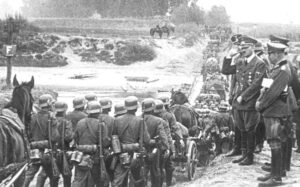 tanks and air support. Such an attack ideally leads to a quick victory, limiting the loss of soldiers and artillery. After the German forces had plowed their way through, devastating a swath of territory, infantry moved in, picking off any remaining resistance.”
tanks and air support. Such an attack ideally leads to a quick victory, limiting the loss of soldiers and artillery. After the German forces had plowed their way through, devastating a swath of territory, infantry moved in, picking off any remaining resistance.”
Hitler was methodical. He established a base of operations within the target country. Then, he immediately began setting up “security” forces to take out anyone who disagreed with his Nazi ideology, whether racial, religious, or political. He set up concentration camps for slave laborers and the extermination of uncooperative civilians. It didn’t take long for the target nation, in this case Poland to become a conquered nation under German rule. Just one day after the German invasion of Poland, Hitler was busy setting up SS “Death’s Head” regiments to terrorize the people. He was preparing for his planned terror.
The Polish army tried to fight back, but they made several severe strategic miscalculations in those early days. Even with an army of 1 million soldiers, the lack of the necessary equipment was a severe detriment to the Polish forces as they attempted to take the Germans head-on, when maybe they should have fallen back to defensive positions. I think the natural way to face an enemy, is head-on. We try to “show no fear” when attacked, but in the end, this thinking, while admirable was probably behind the times, at least in battle, and the brave Polish soldiers were no match for the overwhelming and modern-mechanized German forces. To make matters worse, any hope the Polish soldiers might have had of a Soviet counter-response was lost with  the signing of the Ribbentrop-Molotov Nonaggression Pact…”a non-aggression pact between Nazi Germany and the Soviet Union that partitioned Eastern Europe between them. The pact was signed in Moscow on 23 August 1939 by German Foreign Minister Joachim von Ribbentrop and Soviet Foreign Minister Vyacheslav Molotov and was officially known as the Treaty of Non-Aggression between Germany and the Union of Soviet Socialist Republics. Unofficially, it has also been referred to as the Hitler–Stalin Pact, Nazi–Soviet Pact or Nazi–Soviet Alliance.” Germany invaded Poland on September 1, 1939. Great Britain responded with bombing raids over Germany three days later.
the signing of the Ribbentrop-Molotov Nonaggression Pact…”a non-aggression pact between Nazi Germany and the Soviet Union that partitioned Eastern Europe between them. The pact was signed in Moscow on 23 August 1939 by German Foreign Minister Joachim von Ribbentrop and Soviet Foreign Minister Vyacheslav Molotov and was officially known as the Treaty of Non-Aggression between Germany and the Union of Soviet Socialist Republics. Unofficially, it has also been referred to as the Hitler–Stalin Pact, Nazi–Soviet Pact or Nazi–Soviet Alliance.” Germany invaded Poland on September 1, 1939. Great Britain responded with bombing raids over Germany three days later.
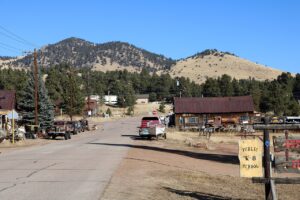
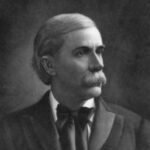 The town of Guffey, Colorado got its start in 1890 with the promise of gold and big money. It quickly attracted prospectors from all over the country. The Cripple Creek mine was just 30 miles away from town, and so the town was the perfect supply hub for mining claims that were expected to spring up between Cripple Creek and Guffey. When Guffey was established, the mining camp was called Idaville, but shortly thereafter its name was changed to Freshwater.
The town of Guffey, Colorado got its start in 1890 with the promise of gold and big money. It quickly attracted prospectors from all over the country. The Cripple Creek mine was just 30 miles away from town, and so the town was the perfect supply hub for mining claims that were expected to spring up between Cripple Creek and Guffey. When Guffey was established, the mining camp was called Idaville, but shortly thereafter its name was changed to Freshwater.
Guffey was actually legally incorporated in 1895, and it was immediately booming as a mining, lumbering, and ranching community. The Freshwater Mining District wasn’t just about gold mines. The area also produced copper, lead, and other minerals. The minerals that could be mined in the area made Guffey a center of activity. For most, gold was the big draw, mostly because they didn’t understand the value of the other minerals, like we do now, with new technologies and new uses for minerals. On August 31, 1896, the Colorado Daily Chieftain reported, “All of the arrangements have been completed, and negotiations closed for the construction of a cyanide mill on Currant Creek, of a capacity of 60-tons per day. The mill is now assured beyond any doubt, and ground will be broken for its construction within a fortnight. The capitalists behind the enterprise are Roadhaven and Vanderpool, of Saint Louis, who have visited the camp several times, investigating our mines and ores, with William Goodman of Cripple Creek, who has been largely instrumental in consummating this enterprise. They claim to be able to treat $7 ore at a profit, which it is claimed will make of Freshwater the biggest camp in the world. The townspeople have guaranteed the company 50 tons of ore per day. This step locates Freshwater beyond the boundary of a prospecting camp and places it in the list of producers.”
The town would receive another name change in the late 1890s, this time due to the fact that there was another town with the same name in California. In honor of James McClurg Guffey, an oilman and capitalist, the town was named Guffey. The town was known throughout the region for its dances, which included lots of fiddlers and other musicians. Guffy reached its peak during this period, with over 500 residents and 40 businesses…most of which were brought in with the promise of gold.
While there were many mines and prospects around Guffey, the total production recorded was disappointingly minor. The cattle ranches and lumber operations located nearby supported Guffey while mining wasn’t profitable. In reality, the town was probably more suited for ranching anyway. Soon many of the businesses began to leave. The Park County Bulletin, dated January 17, 1902, stated, “With this issue, the GUFFEY PROSPECTOR will cease publication. This is due in part to the fact that the camp has another paper and to the additional fact that the Freshwater districts have failed, so far, to develop sufficiently to support a newspaper. The PROSPECTOR has for some time been published from the BULLETIN office, and while working faithfully for the camp, it has never been a paying investment. Those in the Freshwater districts who wish to settle their accounts with the paper can do so with Captain Sylvis at the Guffey post office. To those who wish it, the BULLETIN will be continued to their address, and we will try to make it meet their requirements as always up with the news of Park County. We still have faith in the Freshwater districts and believe that, when sufficient depth has been obtained, there will be pay mines made and profitable mining is done.”
Before long, the people started to move away too. While Guffey still exists today, the community has only around 49 residents and relies heavily on tourism. There are still several of the original structures remaining and are actually occupied. The others have been kept up, though empty, so that the town can keep its historic value and possible income potential for the future. The town currently has a charter school, restaurant, small museum, and more. Guffey continues to be the center of activity for nearby ranches, some of which are Park County Historic Landmarks, including the Aspen Creek/Bener/Moore Ranch, Campbell Ranch, and Thirty-One-Mile Ranch. So, while the town’s size has dwindled, its usefulness has not. Guffey also sits in a very scenic area created by three ancient volcanoes. The Guffey volcanic center is part of the Thirty-nine Mile Volcanic area, the largest remnant of the Central Colorado volcanic field. There are two mineral springs just a mile south of Guffey, that feature spring waters bubbling up from large mounds over 20 feet high and 50 feet across.
Sadly, not all is well in Guffey. As in any town, crime can happen. In January 2001, the bodies of three members of the Dutcher family were found near Guffey. They had been murdered. Later, three teenagers were convicted of the crime. Apparently these three boys had decided to form a paramilitary organization. They were supposedly practicing for future action they planned to take in the country of Guyana. The murders were part of their “practice sessions.” The brutal nature of the crime and its bizarre motive attracted national attention, but really not the kind of attention that the town wanted to be famous for.
The town does have some real oddities that it doesn’t mind being famous for. It would be considered a “somewhat ghost town” and strangely, has a habit of electing animals as Mayor. In fact, while the two main political parties are the Democrats and the Republicans, the current Mayor, Monster the Cat was elected in 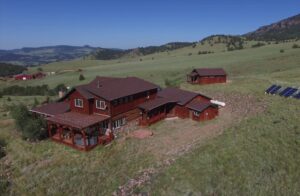
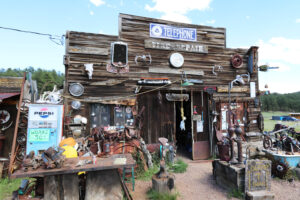 1998. Lydia Reynolds of Guffey’s 31 Mile Ranch and Bill Sioux of Guffey Garage left us a comment confirming Monster was still alive and well…as of November 2019 anyway. I suppose that in a small town, you could get away with an animal as mayor, but for most of us, that would definitely be odd. Nevertheless, I guess it just adds to the charm of this quaint, old town.
1998. Lydia Reynolds of Guffey’s 31 Mile Ranch and Bill Sioux of Guffey Garage left us a comment confirming Monster was still alive and well…as of November 2019 anyway. I suppose that in a small town, you could get away with an animal as mayor, but for most of us, that would definitely be odd. Nevertheless, I guess it just adds to the charm of this quaint, old town.

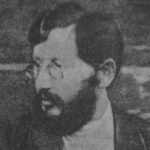 Soviet leader Vladimir Lenin had just finished speaking at a factory in Moscow, when Fanya Kaplan, a member of the Social Revolutionary party shot him twice. Lenin, the leader of the Bolsheviks was seriously wounded, but survived the attack. The attempted assassination basically set off a “gang war” of sorts, although to a much larger degree…a Civil War, really. That war, known as Red Terror, set off a wave of reprisals by the Bolsheviks against the Social Revolutionaries and other political opponents. As Russia fell deeper into civil war, thousands of people were executed. This had been coming since 1887, but would not fully materialize until the assassination of Petrograd Cheka leader Moisei Uritsky and the attempted assassination of Vladimir Lenin.
Soviet leader Vladimir Lenin had just finished speaking at a factory in Moscow, when Fanya Kaplan, a member of the Social Revolutionary party shot him twice. Lenin, the leader of the Bolsheviks was seriously wounded, but survived the attack. The attempted assassination basically set off a “gang war” of sorts, although to a much larger degree…a Civil War, really. That war, known as Red Terror, set off a wave of reprisals by the Bolsheviks against the Social Revolutionaries and other political opponents. As Russia fell deeper into civil war, thousands of people were executed. This had been coming since 1887, but would not fully materialize until the assassination of Petrograd Cheka leader Moisei Uritsky and the attempted assassination of Vladimir Lenin.
Vladimir Ilich Ulyanov was born on April 22, 1870, in Simbirsk, Russian Empire. After his brother was executed in 1887 for plotting to assassinate Czar Alexander III, Ulyanov became interested in the revolutionary cause, also adopting the pseudonym…Lenin. He decided to study law and upon completion, took up practice in Petrograd, which is now Saint Petersburg. In Petrograd, Lenin began to associate with people from the revolutionary Marxist circles. Soon, he was organizing a Marxist group in the capital to enlist workers to the Marxist cause. He called the new group, “Union for the Struggle for the Liberation of the Working Class.” Following the December 1895, arrest of Lenin and the other leaders of the Union, Lenin was jailed for a year. Upon his release, he was exiled to Siberia for a term of three years.
After his term in jail, and the subsequent exile, Lenin went to Western Europe in 1900, where he continued his revolutionary activity. In 1902, while in Western Europe that he published a pamphlet titled “What Is to Be Done?,” which argued that only a disciplined party of professional revolutionaries could bring socialism to Russia. Of course, most of us know that Lenin was working in the shadows to get back into the Russian Marxist system. In 1903, he met with other Russian Marxists in London and established the Russian Social-Democratic Workers’ Party (RSDWP), but while he tried really hard, there was discord from the start. There remained a split between Lenin’s Bolsheviks (Majoritarians), who advocated militarism, and the Mensheviks (Minoritarians), who advocated a democratic movement toward socialism. There is a saying, about a house divided…it just can’t stand. These two groups increasingly opposed each other within the framework of the RSDWP, and Lenin made the split official at a 1912 conference of the Bolshevik Party.
After the outbreak of the Russian Revolution of 1905, Lenin made his move, and returned to Russia. The revolution, which consisted mainly of strikes throughout the Russian empire, came to an end when Nicholas II promised reforms, including the adoption of a Russian constitution and the establishment of an elected legislature. Then, when order had been restored, as often happens in government, the czar nullified most of these reforms. That forced Lenin to go into exile again in 1907.
Lenin was opposed to World War I, which began in 1914, calling it “an imperialistic conflict” and called on “working-class” soldiers to turn their guns on the capitalist leaders who “sent them down into the murderous trenches.” Lenin was pushing for a socialist agenda by appealing to the middle-income people who felt like they should be given a handout by the government to supplement their income. Little did they know that socialism is never the best solution. War is always hard on the countries involved, but World War I was an unprecedented disaster for Russia. The Russian casualties were greater than those sustained by any other nation in any previous war. The war also left the economy hopelessly disrupted by the costly war effort. By March of 1917, things had gotten so bad that riots and strikes broke out in Petrograd over the scarcity of food. To make matters worse, army troops who had lost confidence in the leadership joined the strikers, and on March 15 Nicholas II was forced to abdicate, which brought to an end centuries of czarist rule. Following the February Revolution, so named because of Russia’s use of the Julian calendar, power was shared between the ineffectual Provincial Government and the soviets, or “councils” of soldiers’ and workers’ committees.
German authorities allowed Lenin and his lieutenants to secretly cross Germany en route from Switzerland to Sweden in a sealed railway car, after the outbreak of the February Revolution. The hope was that the return of the anti-war Socialists to Russia would undermine the Russian war effort, which had been continued under the Provincial Government. Lenin began to push for the overthrow of the Provincial Government by the soviets, an act for which he was condemned as a “German agent” by the government’s leaders. Forced to escape to Finland in July, his call for “peace, land, and bread” met with increasing popular support, and the Bolsheviks won a majority in the Petrograd soviet. Then, in October, Lenin secretly returned to Petrograd, and on November 7th the Bolshevik-led Red Guards took down the Provisional Government and proclaimed soviet rule.
Following the coup, Lenin became the virtual dictator of the world’s first Marxist state. His government made peace with Germany, nationalized industry, and distributed land but beginning in 1918, it all began to fall apart. The nation sank into a devastating civil war against czarist forces. In 1920, the czarists were defeated, and in 
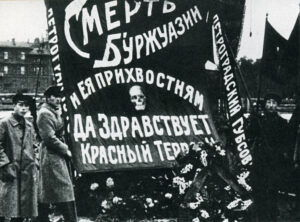 1922 the Union of Soviet Socialist Republics (USSR) was established. Upon Lenin’s death in early 1924, his body was embalmed and placed in a mausoleum near the Moscow Kremlin. Petrograd was renamed Leningrad in his honor. After a struggle of succession, fellow revolutionary Joseph Stalin succeeded Lenin as leader of the Soviet Union. The Lenin years were finally over.
1922 the Union of Soviet Socialist Republics (USSR) was established. Upon Lenin’s death in early 1924, his body was embalmed and placed in a mausoleum near the Moscow Kremlin. Petrograd was renamed Leningrad in his honor. After a struggle of succession, fellow revolutionary Joseph Stalin succeeded Lenin as leader of the Soviet Union. The Lenin years were finally over.
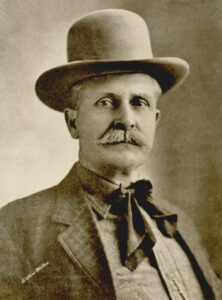 Many of the lawmen of the Old West started out as outlaws, and some of their careers continued to be “questionable” throughout their lives. The Three Guardsmen, was the name given to three lawmen who became legendary in their pursuit of many outlaws of the late 19th century. The men, Deputy US Marshals Bill Tilghman (1854–1924), Chris Madsen (1851–1944), and Heck Thomas (1850–1912) were working under US Marshal Evett “E D” Nix. Tilghman started out as a gunslinger before becoming part of the Three Guardsmen, but he might have been categorized as a “reluctant” gunslinger, since he only resorted to violence, when it was absolutely necessary. Madsen started a criminal career, resulting in several convictions for fraud and forgery, before he became a lawman and member of the Three Guardsmen. Thomas was twelve at the beginning of the American Civil War, when he accompanied his father and his uncle, Edward Lloyd Thomas, to war as a courier. He would have been the exception to the rule in the Three Guardsmen, because he was not an outlaw. Still, if you were going to be a lawman in those days, you had better know your way around a gun.
Many of the lawmen of the Old West started out as outlaws, and some of their careers continued to be “questionable” throughout their lives. The Three Guardsmen, was the name given to three lawmen who became legendary in their pursuit of many outlaws of the late 19th century. The men, Deputy US Marshals Bill Tilghman (1854–1924), Chris Madsen (1851–1944), and Heck Thomas (1850–1912) were working under US Marshal Evett “E D” Nix. Tilghman started out as a gunslinger before becoming part of the Three Guardsmen, but he might have been categorized as a “reluctant” gunslinger, since he only resorted to violence, when it was absolutely necessary. Madsen started a criminal career, resulting in several convictions for fraud and forgery, before he became a lawman and member of the Three Guardsmen. Thomas was twelve at the beginning of the American Civil War, when he accompanied his father and his uncle, Edward Lloyd Thomas, to war as a courier. He would have been the exception to the rule in the Three Guardsmen, because he was not an outlaw. Still, if you were going to be a lawman in those days, you had better know your way around a gun.
In 1889, the state of Oklahoma was in need of a serious “cleaning up” or at least part of it was. The Three Guardsmen were widely considered honest, dutiful, and capable, so I guess they must have turned over a new leaf in their careers. These marshals were responsible for suppressing much of the outlaw element in the Indian Territory and the surrounding area. It is said that they arrested more than 300 outlaws during the next decade, while killing several others. These marshals were all three had the reputation of being determined in their pursuit, regardless of bad weather. Each of the men was known for their unique tracking abilities. Oddly, the  nickname Three Guardsmen was not given to them by the townspeople or the other lawmen, but rather by outlaws they pursued.
nickname Three Guardsmen was not given to them by the townspeople or the other lawmen, but rather by outlaws they pursued.
Thomas carried out a relentless pursuit of the Dalton Gang, during their outlaw career, and was specifically mentioned by gang member Emmett Dalton as one reason the Dalton Gang attempted to rob two banks simultaneously in Coffeyville, Kansas. Their plan was “to make one big score so that they could leave the territory for a time” and get away from Thomas. Resistance from the lawmen and citizens of Coffeyville to this robbery ended with the deaths of most of the members of the gang.
The Three Guardsmen are most famous for their pursuit of the Wild Bunch, or Doolin Gang, which included the surviving members of the Dalton Gang. The three lawmen eliminated many of the members of the Doolin Gang by systematically killing gang members who resisted them and arresting those who would surrender. They would let nothing slide, and they tracked them until they found them. Deputy Marshal Heck Thomas killed gang leader Bill Doolin. Deputy Marshal Chris Madsen led the posse that killed Doolin gang members “Dynamite Dan” Clifton and Richard “Little Dick” West. Deputy Marshal Tilghman was ultimately responsible for the death of Doolin gang member William F “Little Bill” Raidler. Other gang members were also captured or killed by them. Their law careers were filled with success stories that helped to rid the Old West of some of its most notorious killers.
Bill Tilghman retired in 1910 and was elected to the Oklahoma State Senate. On October 31, 1924, at the 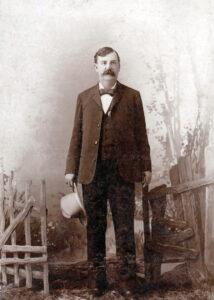 age of 70, Tilghman was murdered by a corrupt prohibition agent named Wiley Lynn, while serving as town Marshal for Cromwell, Oklahoma. The town was a wild place at that time. It was full of brothels, pool halls, and saloons. Tilghman might have been the only thing between the outlaw element and the town, because just one month after his death, the entire town was burned to the ground…leaving no buildings standing. Chris Madsen and other former law enforcement friends of Tilghman were believed to have been responsible, but no investigation into the arsons was ever conducted. I suppose it was a possible retaliation, but we will never know. The town of Cromwell never recovered, and as of the 2000 census, its population was less than 300.
age of 70, Tilghman was murdered by a corrupt prohibition agent named Wiley Lynn, while serving as town Marshal for Cromwell, Oklahoma. The town was a wild place at that time. It was full of brothels, pool halls, and saloons. Tilghman might have been the only thing between the outlaw element and the town, because just one month after his death, the entire town was burned to the ground…leaving no buildings standing. Chris Madsen and other former law enforcement friends of Tilghman were believed to have been responsible, but no investigation into the arsons was ever conducted. I suppose it was a possible retaliation, but we will never know. The town of Cromwell never recovered, and as of the 2000 census, its population was less than 300.
Madsen had retired in 1905 and died in 1944 at the age of 93, after living a relatively peaceful retired life. Heck Thomas retired in 1905, and in 1907 accepted a Chief of Police position in Lawton, Oklahoma. He died in 1912 of Bright’s disease.
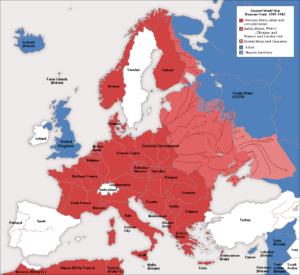
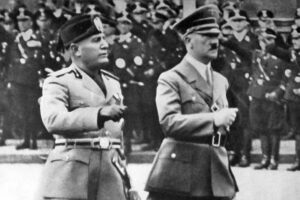 When countries choose sides in a war, there isn’t normally much chance that they will switch sides, but that is exactly what happened to Romania…and in fact, there were four countries that switched sides in that war, so maybe it isn’t so uncommon after all. At the start of the war Romania was allied and Poland and pro-British. They were trying to stay neutral, but that wasn’t easy. As the war progressed, Romania became more and more concerned about being overrun by the Soviet Union and the Fascist elements already in Romania. Finally, the decision was made to adopt a pro-German dictatorship and became an ‘affiliate state’ of the Axis Powers. The Romanian government signed the Tripartite Pact in November 1940. During the time that Romania supported the Axis powers, they supplied Nazi Germany and the Axis armies with oil, grain, and industrial products. Also, numerous train stations in the country, such as Gara de Nord in Bucharest, served as transit points for troops departing for the Eastern Front.
When countries choose sides in a war, there isn’t normally much chance that they will switch sides, but that is exactly what happened to Romania…and in fact, there were four countries that switched sides in that war, so maybe it isn’t so uncommon after all. At the start of the war Romania was allied and Poland and pro-British. They were trying to stay neutral, but that wasn’t easy. As the war progressed, Romania became more and more concerned about being overrun by the Soviet Union and the Fascist elements already in Romania. Finally, the decision was made to adopt a pro-German dictatorship and became an ‘affiliate state’ of the Axis Powers. The Romanian government signed the Tripartite Pact in November 1940. During the time that Romania supported the Axis powers, they supplied Nazi Germany and the Axis armies with oil, grain, and industrial products. Also, numerous train stations in the country, such as Gara de Nord in Bucharest, served as transit points for troops departing for the Eastern Front.
With all of this, Romania caught the eye of the Allies in 1943, and soon became a target for their aerial bombardment. One of the most notable air bombardments was the attack on the oil fields of Ploie?ti on August 1, 1943, known as Operation Tidal Wave. On April 4 and 15, 1944, Bucharest was subjected to intense Allied bombardment. On August 23, 1944, King Michael I removed the government of Ion Antonescu and declared Romanian support to the Allies. Then the Luftwaffe bombed the city Bucharest on August 24 and 25, 1944 in direct response to the Romania’s decision to switch sides. Some experts believe that by switching sides Romania helped shorten the war by several months. I’m sure that Romania was glad to be on the winning side of the war.
Romania was not the only nation to switch sides in Worls War II. They were Bulgaria, Finland, and Italy. Bulgaria also signed the Tripartite Pact in March of 1941, but Finland never signed it, but was nonetheless a co-belligerent on the side of the Axis Powers. Finland signed the Anti-Comintern Pact, an anti-communist agreement of mainly fascist powers, in November 1941. Italy had its own imperial ambitions, which were partly 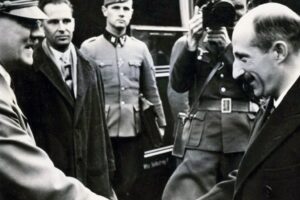
 based on the Roman Empire and similar to the German policy of lebensraum, which clashed with those of Britain and France. No matter wat their aspirations were, all of these nations decided that the ways of Germany and Hitler were simply not ways they could live with, so they switched sides, joined the Allied Nations, further weakened Hitler to the point of causing his demise.
based on the Roman Empire and similar to the German policy of lebensraum, which clashed with those of Britain and France. No matter wat their aspirations were, all of these nations decided that the ways of Germany and Hitler were simply not ways they could live with, so they switched sides, joined the Allied Nations, further weakened Hitler to the point of causing his demise.
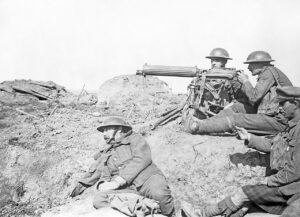 The dynamic of the world wars was probably different than most other wars…especially when it came to which units and countries were fighting side by side or against each other. When Britain declared war against Germany in August 1914, Australia was automatically also at war, because it was part of the British Empire. The New Zealand government (also under the sovereignty of the British Empire) followed without hesitation despite its geographic isolation and small population. The British Empire is for most of us, a difficult to understand group of countries that while largely independent, is also part of a larger government…the British Empire. The British Empire is a worldwide system of dependencies—colonies, protectorates, and other territories, that over a span of some three centuries was brought under the sovereignty of the crown of Great Britain and the administration of the British government. The policy of granting or recognizing significant degrees of self-government by dependencies, which was favored by the far-flung nature of the empire, led to the development by the 20th century of the notion of a “British Commonwealth” that was comprised of largely self-governing dependencies that acknowledged an increasingly symbolic British sovereignty. The term was embodied in statute in 1931. Today the Commonwealth includes former elements of the British Empire in a free association of sovereign states. Now, I don’t claim to understand the inner workings of the British Empire or the British Commonwealth, but Australia and New Zealand apparently had the option to join Britain in the war or to stand back and remain neutral. Both nations were loyal and joined Great Britain.
The dynamic of the world wars was probably different than most other wars…especially when it came to which units and countries were fighting side by side or against each other. When Britain declared war against Germany in August 1914, Australia was automatically also at war, because it was part of the British Empire. The New Zealand government (also under the sovereignty of the British Empire) followed without hesitation despite its geographic isolation and small population. The British Empire is for most of us, a difficult to understand group of countries that while largely independent, is also part of a larger government…the British Empire. The British Empire is a worldwide system of dependencies—colonies, protectorates, and other territories, that over a span of some three centuries was brought under the sovereignty of the crown of Great Britain and the administration of the British government. The policy of granting or recognizing significant degrees of self-government by dependencies, which was favored by the far-flung nature of the empire, led to the development by the 20th century of the notion of a “British Commonwealth” that was comprised of largely self-governing dependencies that acknowledged an increasingly symbolic British sovereignty. The term was embodied in statute in 1931. Today the Commonwealth includes former elements of the British Empire in a free association of sovereign states. Now, I don’t claim to understand the inner workings of the British Empire or the British Commonwealth, but Australia and New Zealand apparently had the option to join Britain in the war or to stand back and remain neutral. Both nations were loyal and joined Great Britain. 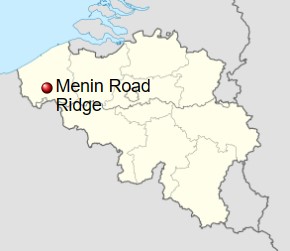
The Australian 6th Battalion was sent into warfare just two months after WWI began in August 1914. They met up with and joined the New Zealand Army, becoming the ANZAC (Australian and New Zealand Army Corps) from April 1915, while maintaining status as the Australian 6th Battalion until the unit was evacuated in December 1915. The Australian 6th Battalion fought German troops on the Western Front alongside the Allies. They were a good battalion, but for most of the time, there were no major decorations awarded…until. in September 1917, while serving in Belgium, Lieutenant Frederick Birks was awarded the only Victoria Cross ever granted within the unit. Sadly, Birks was killed in action the following day.
The Victoria Cross (VC) is “the highest and most prestigious decoration of the British honors system. It is awarded for valor ‘in the presence of the enemy’ to members of the British Armed Forces and may be awarded posthumously.” On September 17th, Birks’ battalion was moving parallel to a German line, with the orders to attack and capture the German line and blow them up. The men began moving toward their positions from Zillebeke on the night of September 18th, and immediately came under fire from gas shells. September 19th found the men holding their line, while the battalion prepared to attack the German line the next day. The battle that ensued became known as the Battle of Menin Road. Masked by a “light drizzle” of rain at 4am on  September 20th, the Germans sent barrages in front of and behind the battalion’s position. The battalion began their advanced at 5:40am. Birks and a corporal met the first German resistance and took two machine-gun positions, as another group of officers rushed a strong post. The Germans attacked the group with bombs, seriously wounding the corporal. Birks had to continue on alone. Birks advanced to the rear of the pillbox and forced the occupants to surrender. Birks went on to lead an attack a series of dugouts and pillboxes on the edge of Glencorse Wood, and fought against machine gun and bombs. He also assisted in the reorganization and consolidation of Australian men who had drifted away from their unit. September 21st brought more enemy shelling in response to the movement of Allied artillery. The shelling buried some men in Birks’ platoon. Birks attempted to dig the men out, “standing exposed” in the effort, another shell aimed at the C Coy post killed Birks, and four others, before he could save them. For his actions at Ypres, Birks was posthumously awarded the Victoria Cross, the announcement was made on November 8, 1917.
September 20th, the Germans sent barrages in front of and behind the battalion’s position. The battalion began their advanced at 5:40am. Birks and a corporal met the first German resistance and took two machine-gun positions, as another group of officers rushed a strong post. The Germans attacked the group with bombs, seriously wounding the corporal. Birks had to continue on alone. Birks advanced to the rear of the pillbox and forced the occupants to surrender. Birks went on to lead an attack a series of dugouts and pillboxes on the edge of Glencorse Wood, and fought against machine gun and bombs. He also assisted in the reorganization and consolidation of Australian men who had drifted away from their unit. September 21st brought more enemy shelling in response to the movement of Allied artillery. The shelling buried some men in Birks’ platoon. Birks attempted to dig the men out, “standing exposed” in the effort, another shell aimed at the C Coy post killed Birks, and four others, before he could save them. For his actions at Ypres, Birks was posthumously awarded the Victoria Cross, the announcement was made on November 8, 1917.
 Elephants are naturally non-aggressive animals. In fact, they are known to be one of the most emphatic and kind species in the whole animal kingdom. Their caring nature is well documented in dozens of videos online displaying their sensitivity and caring behavior both towards people and other elephants. Nevertheless, their very size, along with certain situations can make they very dangerous to humans. If elephants do attack humans or other animals, it is normally because they were provoked. Most attacks are acts of self-defense or the protection of their calves. Of course, there are other reasons, such as when they feel threatened or when they are harmed, ill, or mistreated. Females can be extremely aggressive when their young ones are nearby, similar to a mama bear. Male elephants are sometimes aggressive when displaying their dominance, or if they are experiencing musth, which is caused by a huge surge of testosterone, about 60 times the usual amount, and it makes even usually very calm bull Elephants aggressive. One other reason that elephants can be aggressive toward humans…sadly, is if they are trained to be aggressive toward humans.
Elephants are naturally non-aggressive animals. In fact, they are known to be one of the most emphatic and kind species in the whole animal kingdom. Their caring nature is well documented in dozens of videos online displaying their sensitivity and caring behavior both towards people and other elephants. Nevertheless, their very size, along with certain situations can make they very dangerous to humans. If elephants do attack humans or other animals, it is normally because they were provoked. Most attacks are acts of self-defense or the protection of their calves. Of course, there are other reasons, such as when they feel threatened or when they are harmed, ill, or mistreated. Females can be extremely aggressive when their young ones are nearby, similar to a mama bear. Male elephants are sometimes aggressive when displaying their dominance, or if they are experiencing musth, which is caused by a huge surge of testosterone, about 60 times the usual amount, and it makes even usually very calm bull Elephants aggressive. One other reason that elephants can be aggressive toward humans…sadly, is if they are trained to be aggressive toward humans.
In Ancient Asia, death by elephant was no accident…it was a popular form of execution. In this practice, elephants were trained to slowly break bones, crush skulls, twist off limbs, or even execute people using large blades fitted to their tusks. In some parts of Asia, this method of execution was still popular up to the late 19th 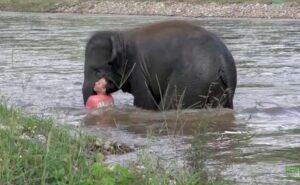 century. A form of capital punishment, execution by elephant was used in South and Southeast Asia, particularly in India, where Asian elephants were used to crush, dismember or torture captives in public executions. It was a form of capital punishment, but also used as a type of sport for the captors, and intimidation for everyone else. Depending on the “sentence” the elephants were trained to kill their victims immediately or to torture them slowly over a prolonged period of time, before killing them. It was a cruel and hideous form of “punishment” most commonly employed by royalty. Owning Executioner Elephants signified both the ruler’s power of life and death over his subjects and his ability to control wild animals. Elephant executions have been recorded in contemporary journals and accounts of life in Asia by European travelers. Before long, outrage over the cruelty of such practices brought about its eventual suppression by the European colonial powers that colonized the region in the 18th and 19th centuries. The practice was mostly confined to Asia, but it was occasionally used by Western and African powers, such as Ancient Rome and Carthage, particularly to deal with mutinous soldiers.
century. A form of capital punishment, execution by elephant was used in South and Southeast Asia, particularly in India, where Asian elephants were used to crush, dismember or torture captives in public executions. It was a form of capital punishment, but also used as a type of sport for the captors, and intimidation for everyone else. Depending on the “sentence” the elephants were trained to kill their victims immediately or to torture them slowly over a prolonged period of time, before killing them. It was a cruel and hideous form of “punishment” most commonly employed by royalty. Owning Executioner Elephants signified both the ruler’s power of life and death over his subjects and his ability to control wild animals. Elephant executions have been recorded in contemporary journals and accounts of life in Asia by European travelers. Before long, outrage over the cruelty of such practices brought about its eventual suppression by the European colonial powers that colonized the region in the 18th and 19th centuries. The practice was mostly confined to Asia, but it was occasionally used by Western and African powers, such as Ancient Rome and Carthage, particularly to deal with mutinous soldiers.
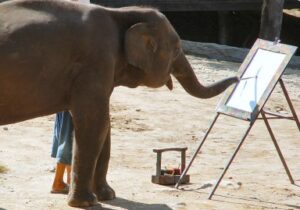
While some elephants were trained to be cruel and aggressive, the fact remains that this is not their natural behavior. In fact, there have been many accounts of elephants helping humans, and many of these were not because they were told to help, but rather that the elephants sensed that the human was in need of assistance. They are incredibly smart, and they see things around them clearly. They can even paint the things they see. They feel, they love, and they cry. Training these beautiful animals to kill was just as cruel to them as it was to their victims. I’m sure those executions were something the elephants could never forget.
 The world was a crazy place on August 20, 1945. It was just eleven days after the atomic bombing of Nagasaki, Japan. The world was a little “scary.” Just knowing that entire towns could be blown off the face of the earth in an instant, changed the whole perspective of life as we knew it. The war was almost over. By September 2, 1945, World War II would be a blip in the rearview mirror of history. Maybe it was time to look for something…happy, for a change.
The world was a crazy place on August 20, 1945. It was just eleven days after the atomic bombing of Nagasaki, Japan. The world was a little “scary.” Just knowing that entire towns could be blown off the face of the earth in an instant, changed the whole perspective of life as we knew it. The war was almost over. By September 2, 1945, World War II would be a blip in the rearview mirror of history. Maybe it was time to look for something…happy, for a change.
Enter Brooklyn Dodgers utility player, Tommy Brown. He was a local kid, who was born December 6, 1927, in the Bensonhurst section of Brooklyn. Brown never knew his father and was raised primarily by an aunt and uncle. That was probably the best thing that could have happened. Brown’s upbringing was such that he was able to make something of himself. He started playing baseball, and he was good enough to be called up to the Majors. Brown made his debut with the Dodgers in 1944, when he was just 16 years old. It was an unusual time, because during World War II, millions of men served overseas, so the ball players were serving in the military. Men like future Hall of Famers Ted Williams and Yogi Berra were among them. That left a group of aspiring teenagers in line for the majors in an almost unheard of shot in the big leagues. Fifteen-year-old Joe Nuxhall was also called up and pitched 2/3 of an inning for the Cincinnati Reds in the summer of 1944. It would be almost like they were replacement players.
On August 3, 1944, while playing for the Newport News (Virginia) Builders of the Class B Piedmont League, Brown got the call that changed not only his life, but baseball history forever. He was headed to the majors, 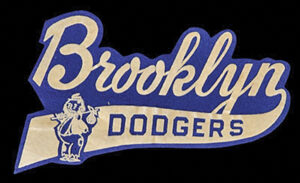 with the Brooklyn Dodgers. Apparently, they had tried Bobby Bragan at shortstop but were looking for someone more mobile. Dodgers’ manager Leo Durocher told Brown that day he would play both games of a doubleheader against the Chicago Cubs. After that shock wore off…for about a second, “Brown, according to a bio on the Society of American Baseball Research web site, advised his manager that he had ridden the train all night, ‘but Leo responded that he didn’t care.'” I guess they were desperate. Brown became the youngest non-pitcher ever to play in a major league game, and the second-youngest overall after Joe Nuxhall, who was 15 years and 316 days old when he first appeared as a pitcher for the Cincinnati Reds on June 10, 1944. He got two hits in eight at-bats as the Cubs beat the Dodgers in both games, 6-2 and 7-1. In 1944, he played a total of 46 games, hitting .164 without a homer. Brown, nicknamed “Buckshot,” threw and batted right-handed. He stood 6 feet 1 inch tall and weighed 170 pounds. Then, on August 20, 1945, he hit a home run…his team’s only run in an 11-1 loss to the Pittsburgh Pirates. He finished that season with a .245 batting average. That home run may not seem like much, but remember that Brown was just 16 years old at the time. With that “homer” to
with the Brooklyn Dodgers. Apparently, they had tried Bobby Bragan at shortstop but were looking for someone more mobile. Dodgers’ manager Leo Durocher told Brown that day he would play both games of a doubleheader against the Chicago Cubs. After that shock wore off…for about a second, “Brown, according to a bio on the Society of American Baseball Research web site, advised his manager that he had ridden the train all night, ‘but Leo responded that he didn’t care.'” I guess they were desperate. Brown became the youngest non-pitcher ever to play in a major league game, and the second-youngest overall after Joe Nuxhall, who was 15 years and 316 days old when he first appeared as a pitcher for the Cincinnati Reds on June 10, 1944. He got two hits in eight at-bats as the Cubs beat the Dodgers in both games, 6-2 and 7-1. In 1944, he played a total of 46 games, hitting .164 without a homer. Brown, nicknamed “Buckshot,” threw and batted right-handed. He stood 6 feet 1 inch tall and weighed 170 pounds. Then, on August 20, 1945, he hit a home run…his team’s only run in an 11-1 loss to the Pittsburgh Pirates. He finished that season with a .245 batting average. That home run may not seem like much, but remember that Brown was just 16 years old at the time. With that “homer” to 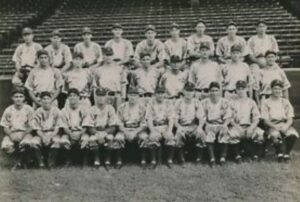 his credit, Brown remains the youngest player to homer in a Major League Baseball game, a record that will likely never be broken.
his credit, Brown remains the youngest player to homer in a Major League Baseball game, a record that will likely never be broken.
Brown played seven more seasons in the big leagues, spending time with the Philadelphia Phillies and Cubs after leaving Brooklyn. He never became anything more than a part-time player, but he will always have the distinction of youngest person to homer to his credit. Brown married a woman from Nashville and stayed in that area after his playing career ended. He worked at the Ford Glass Plant for thirty-five years, before retiring in 1993. He continues to live in retirement in Brentwood, Tennessee.

